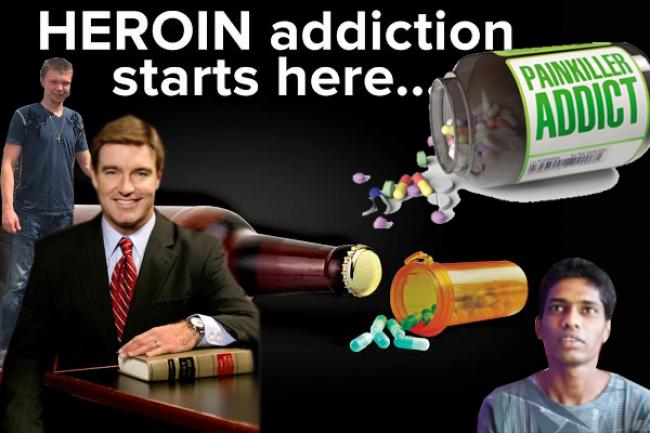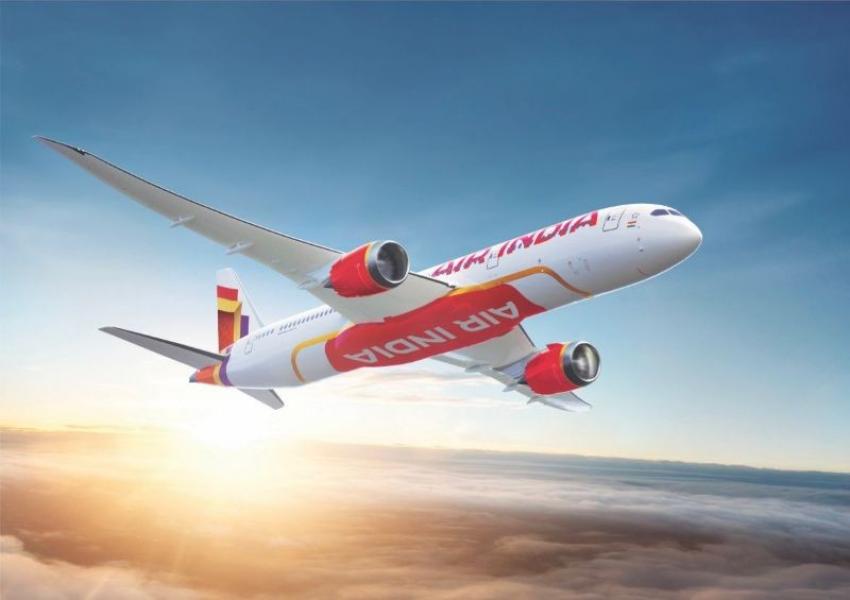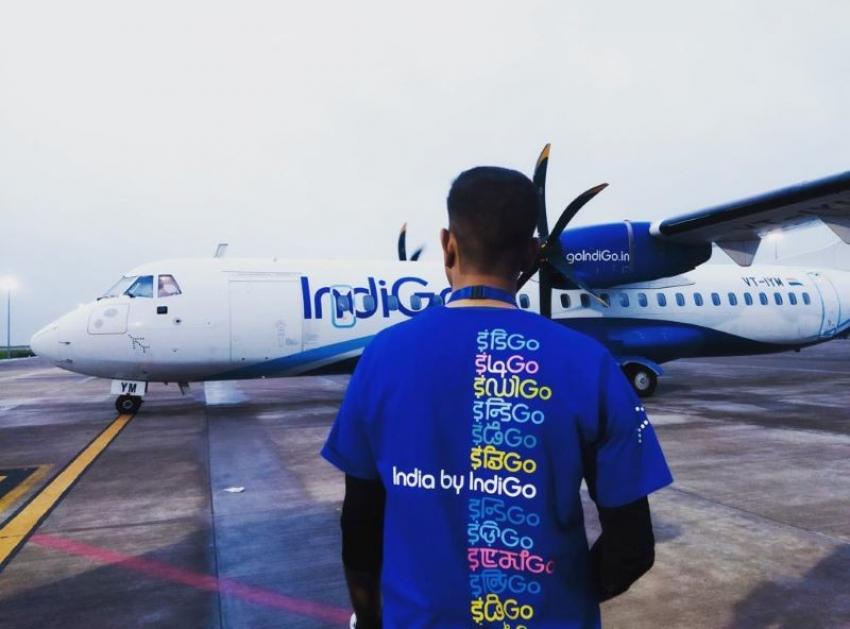01 Jun 2015, 06:58 am

On a warm spring day in the US city of Louisville, Ky., recovering drug addict Tyler Wolz sits at a conference table at The Healing Place recovery centre. His tone is matter-of-fact as he reflects on his dismal past as an opioid addict.
“It was a two-year run, nonstop, everyday, and the usage got bigger. I was using more and more heroin every day ... It was chaos – always in my life,” says Wolz, 23, who abused prescription painkillers before turning to heroin.
Halfway across the world, Shahzad Ahmed, a 17-year-old student in Bangalore, India, shares a similar experience.
“My mother tried to convince me to leave drugs for eight months,” Ahmed says. “I tried, but couldn’t. I was so badly addicted.”
Ahmed and Wolz’s stories highlight the worldwide challenge of opioid abuse – the persistent scourge in the United States and the emerging problem in India. The U.S. Centers for Disease Control and Prevention call prescription opioid abuse an American epidemic, reporting that nearly 100 Americans died from overdose every day in 2010. In India, a 2011 report from the United Nations Office on Drugs and Crime found that opiate use accounts for the highest proportion of illicit drug abuse in India, at 40 percent.
In the United States, death and injury from prescription drug abuse is concentrated in largely-rural states such as Kentucky and West Virginia, which are also two of the poorest in the nation, with economies that can ill afford the high price of rampant drug abuse.
Opioid addiction is a newer phenomenon in India, with northeastern states in particular seeing rising rates of addiction to prescription painkillers and heroin. Problems are also surfacing in other regions, such as Punjab, Orissa, Haryana and Karnataka.
.jpg) Experts say addiction is a disease that knows no boundaries, and places like Kentucky can provide a cautionary tale – and a lesson in dealing with an entrenched scourge-- to parts of the world just beginning to experience the devastation of opioid abuse.
Experts say addiction is a disease that knows no boundaries, and places like Kentucky can provide a cautionary tale – and a lesson in dealing with an entrenched scourge-- to parts of the world just beginning to experience the devastation of opioid abuse.
Karyn Hascal, president of The Healing Place, has worked with addicts abroad and describes the global truth of addiction.
“Something I learned is that a rose is a rose is a rose. Once the process is begun and you’ve crossed the threshold to loss of control, addiction is the same [...] no matter where you are and no matter who you are. Addiction is truly the indiscriminate disease.”
Kentucky: A case study in Opioid Abuse
Kentucky, located in the southeastern region of the country, is among the American states hardest hit by an opioid epidemic centered on prescription painkillers. In 2011, the state’s prescription drug monitoring program recorded a startling 219 million doses of the opioid hydrocodone dispensed in Kentucky.
“We are a state of 4.3 million people. That’s 51 doses of hydrocodone for every man, woman and child in the state,” says Kentucky Attorney General Jack Conway.
The eastern portion of Kentucky is a part of the cultural region known as Appalachia, which spans the Appalachian Mountain range in the eastern United States. Though endowed with an abundance of natural resources, Appalachia has long been associated with poverty. Five of the top ten counties with the lowest median incomes in America are located in Appalachian Kentucky.
The area’s already-downtrodden economy is further hurt by addiction, as employers struggle to find and maintain a sober workforce. Bill Bissett, president of the Kentucky Coal Association, says upwards of 7,000 miners have been laid off since 2012 after failing drug tests.
“It’s not hard to realize that Kentucky’s issue with opioid addiction is also a jobs development issue,” says Conway. “We generally have a great workforce, but in parts of the state there is the perception that our workforce is too addicted, and it’s toxic. There are a lot of employers who are concerned that their workers can’t pass drug tests.”
After the passage of a 2012 state law, prescription painkiller abuse in eastern Kentucky finally began to recede, but a recent rise in heroin abuse is raising new concern across the rest of the state and nation. U.S. federal health statistics show the death rate of heroin overdose doubled from 2010 through 2012, and the 2013 fatality report of the Kentucky Office of Drug Control Policy noted a 12.6 % increase in autopsied overdose deaths attributed to heroin.
.jpg) “Heroin has really just substituted the pills,” says Conway.
“Heroin has really just substituted the pills,” says Conway.
One big reason for this shift is the increased availability of heroin throughout the United States, which makes it a cheaper alternative for long-time prescription painkiller abusers to keep getting high. The population at The Healing Place reflects this shift.
“One year ago, our admissions to mens detox were 5% heroin addicts,” Hascal says. “Today, it’s 95% heroin addicts.”
Conway says heroin makes its way into urban areas throughout the United States via Mexican drug cartels. A distribution network in the upper Midwest then filters the drug into cities like Cincinnati and Louisville. While the drug so far seems to be generally contained in cities, there’s growing concern about its spread to rural areas such as Appalachia – which would further tax an area with an outsized addiction problem and far too little drug treatment.
“In Kentucky, for every 100 people who need treatment, 12 people are able to get treatment. So only 12% of the population who need treatment are actually able to get it,” says Hascal.
India: The Perfect Storm
As the Mexican drug cartels funnel illicit narcotics to the United States, foreign drug traffickers also play a key role in India’s developing addiction problem. Geographically, India is located in close proximity to both the Golden Triangle and Golden Crescent, Asia’s two primary areas of opium cultivation in Afghanistan, Pakistan, Burma, Laos and Thailand. As a result, border states such as Punjab in the North and Nagaland in the East, serve as a gateway for opiates being smuggled into India.
Contrary to the situation in the United States, prescription opioids are less expensive than heroin in India, which the UN says is the fourth-largest producer of pharmaceuticals globally. With the mass manufacturing of opioid medications, however, comes an increase in addiction and abuse.
Limited data makes it difficult to know exactly how big the problem is, but experts agree that the illicit use of painkillers is an issue throughout the country. A 2006 report by the World Health Organization estimates that 12% of opiate addicts in India abuse prescription painkillers such as dextropropoxyphene and buprenorphine.
Opioid abuse in any form is destructive, but it becomes especially dangerous when users inject their drugs; IV drug use is fueling an epidemic of blood-borne illnesses throughout India’s northeastern states. A 2011 report from the UN Office on Drugs and Crime says injection drug use is primarily responsible for placing Nagaland and Manipur among the top five states in India in terms of HIV infection -- which is hitting 15-to-30-year-olds hardest.
Drug addiction overall skews younger in India than in America. The yearly average of adolescents seeking treatment for addiction more than doubled from 2009 to 2014 as reported by the NIMHANS de addiction center in Bangalore.
“The generation today is exposed to many substances for their age group. They start drugs right from school at the age of 12 to 13. Opium is prevalent in the urban areas pertaining to people who can afford it. On the other hand, synthetic (drug) abuse is mostly found among people who are too poor to afford other drugs,” says Laxman S, an occupational therapist and research scholar at the center of Addiction medicine at NIMHANS.
Ahmed, who is almost finished with his treatment at NIMHANS, says he finally looks forward to living a healthy, drug-free life. But it’s been a hard road.
"I lived in a completely different world for the last two years; (I) missed out on a lot it seems,” Ahmed says. “I would not blame my friends, as I was equally responsible pertaining to my age. I would want to continue college if, of course, they take me back. Also support my family however I can.”
But even as Ahmed recovers, countless other teens are being introduced to narcotics on a daily basis. Manjunath B.S., the Vice President of Chemical Addiction Treatment in Kengeri, says drugs remain readily available:“There are a lot of peddlers in the city who (supply) drugs to school and college children at an affordable price. They learn it from school itself, a big reason to worry.”
Toward a Solution
Preventing at-risk adolescents from resorting to drug abuse is a big priority for lawmakers in both the United States and India.
Last December, Indian Prime Minister Narendra Modi addressed the nation about fighting the country’s drug addiction problem, particularly among youth. Modi called for a national campaign promoting a “drug-free India.”
"For (a) long (time), I have been having concern about the young generation...That some son has got caught in such a quagmire where everything is devastated. Drugs are such a devastation," Modi said in his national broadcast.
In the United States, the 2013 federal budget allocated $20 million for the Youth Drug Media Prevention Program in the United States Office of National Drug Control Policy, which aims to raise awareness about the dangers of drug abuse.
Conway agrees that educating teens is a crucial way to fight addiction.
“The statistics show that if you can get an adolescent or juvenile to get started down this path into treatment at an earlier age, you have a better chance of permanent success down the road by treating them earlier,” he says, adding: “We can’t incarcerate our way out of this problem.”
Hascal agrees, saying locking up addicts “doesn’t work unless you really have nothing but money to put into prisons.”
Wolz, who has struggled with addiction since he was 14, has found both sobriety and a sense of purpose since beginning treatment at The Healing Place. His daily schedule is filled with classes, chores and other activities that he completes alongside the center’s other residents, who Wolz says have now become some of his closest friends.
“This program has done wonders for me. I can talk to people about anything...we have fun sober,” Wolz says. “As long as we stick together, we will be okay.”
Hascal would like to see policymakers across the globe focus more on giving addicts access to treatment.
“I think one of the universal truths is that it doesn't matter what you’re addicted to, the process is the same and the process of recovery is basically the same,” says Hascal. “There may be a lot of different avenues to recovery, but ultimately, recovery means an improvement in your lifestyle ---and you’re no longer dependent on a drug or alcohol to change how you feel.”
https://www.youtube.com/watch?
SIDEBAR:
Asia’s opium hubs
By Hannah Cornett
The opiates that addicts swallow, snort and inject often begin their journey to India from two regions – the Golden Triangle and the Golden Crescent.
“The Golden Triangle” is Southeast Asia’s primary hub for opium cultivation. Located along the Mekong River, where Burma, Laos and Thailand’s borders converge, the illicit drug trade is thriving--exceeding $16.3 billion per year, according to a 2014 United Nations report. Though eradication efforts in the late 1990’s and early 2000’s caused the area’s opium cultivation to decline, it began surging again in 2006, partly because transportation improvements made it easier to move the drug from place to place.
The Golden Triangle is currently the world’s second-largest opium producer. A 2014 report from the United Nations Office on Drugs and Crime estimates the region’s opiate poppy cultivation rose to 63,800 hectares (ha) last year, compared with 61,200 ha in 2013, nearly triple the amount harvested in 2006. Burma is the region’s lead opium cultivator.
Poverty and a lack of economic opportunity fuel illicit opium farming throughout the Golden Triangle, researchers say. In one survey in Burma, village farmers said they cultivated opium poppy just to provide for basic essentials, such as food, education and housing. Given their motivation, researchers say economic development in these areas may be the best way to prevent opium growing.
Recently, the Golden Triangle has been replaced as the world’s dominant opium producer by a new regional power known as the Golden Crescent, an area comprised of Afghanistan and Pakistan. Afghanistan is the world’s largest opium producer, and Pakistan primarily serves as an illicit drug trafficking route.
The 2014 World Drug Report says war-torn Afghanistan accounts for 90 percent of global opium production. In 2013, the country cultivatedan estimated 5,500 tons of oven-dried opium, which translates into roughly four percent of the country’s gross domestic product. Furthermore, the already substantial opium poppy cultivation area is growing. According to the report, the farming area increased by 36 percent from 154,000 ha in 2012 to 209,000 ha in 2013.
This uptick in Afghanistan’s opium cultivation continues despite the fact that the United States has invested more than $7 billion to combat the issue. A 2014 report from the U.S. Special Inspector General for Afghanistan Reconstruction described how the country’s opium cultivation is at an all-time high, despite more than a decade of the United States counter-narcotics efforts.
Afghanistan’s illicit opium production and trafficking is a multibillion-dollar industry, where the Taliban, organized criminal groups and terrorist organizations reap the most profit. The UN Office on Drugs and Crime estimates that in 2009, the Afghan Taliban earned around $155 million from illicit opium trade, while Afghan drug traffickers acquired $2.2 billion – a grim reminder of how drugs fuel crime and terrorism as well as addiction.
Images from Top:
1. Kentucky Attorney General Jack Conway
2. Tyler Wolz, 23, is a recovering addict at The Healing Place recovery center in Louisville, Ky. (Photo by Hannah Cornett)
3. Shahzad Ahmed, 17, is a recovering drug addict at the NIMHANS de addiction center in Bangalore, India (Photo by Anusua Banerjee)
- From Kennedy’s Proposal to 1850s Saloons: The Three Historic D.C. Restaurants Everyone Must Try
- This city has the best bagel in the US, and it’s not New York!
- I escaped to Pachmarhi — what I found in the queen of Satpura left me spellbound
- Air Canada just ranked the Best New Restaurants of 2025 - And the Top Spot isn't who you think
- Rediscovering Arunachal's Monpa Cuisine: One Woman’s Millet Momo Revolution
- Discovering Heritage: A visual journey through Odisha crafts museum Kalabhoomi
- From kebabs to biriyani: Lucknow gets UNESCO honour for its royal cuisine
- Delta takes Spanish flavours to the skies
- Kolkata’s iconic Kathi Roll among world’s top 10 wraps: TasteAtlas
- Yellow Taxis and the Colours of Puja
Air Canada has introduced a new non-stop route connecting Toronto with Rio de Janeiro, with the first flight landing in the Brazilian city on Friday morning.
Air India, India’s leading global airline, and Maldivian, the national airline of the Maldives, have entered a bilateral interline partnership aimed at boosting connectivity between the two countries.
IndiGo, India’s largest airline, is grappling with one of its most severe operational crises in recent years, with widespread flight delays and cancellations disrupting travel across the country for a second consecutive day.





